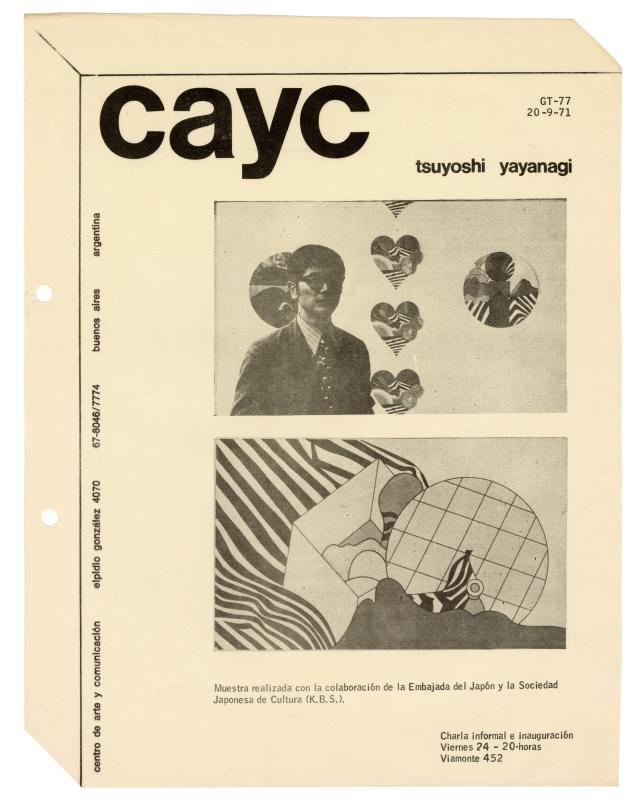Ever since it was founded, the CAYC (Centro de Arte y Comunicación), helmed by the cultural promoter, artist, and businessman Jorge Glusberg, was intended as an interdisciplinary space where an experimental art movement could flourish. The establishment of collaborative networks connecting local and international artists and critics played a key role in this process. The exhibitions shone a light on these exchanges, in which overviews of trends or individual artists introduced the innovations of international contemporary art and made Argentine and Latin American artists better known on the global scene.
After the exhibition Arte y Cibernética, presented at the CAYC in 1969, which included works by artists from the Japanese group CTG (Computer Technique Group), the center kept in touch with a number of Japanese artists working in different fields. In 1971, after having shown the works of Tsuyoshi Yayanagi and Kosuke Kimura (GT-73 [doc. no. 1476304], GT-77 [doc. no. 1476306] and GT-78 [doc. no. 1476275]), and Reiko Ohata and Tetsuro Sawada in late October 1973 (GT-298 [doc. no. 1476444]), the center hosted a solo show of works by Jiro Takamatsu (1936–1998) in March–April 1974.
Takamatsu was a central figure in postwar Japanese art. Beginning in the early 1960s, he worked in a variety of fields including photography, sculpture, painting, drawing, and performance. He used these disciplines to reflect on human perception, defying the boundaries that separate art from everyday life. His works earned him a place in the international network of Conceptual art. In the early 1970s he produced the series Fotografía de una fotografía (Photograph of a Photograph), which included images of photographs printed on paper from his personal archive. These can be viewed laid out on the floor or a table or held in one’s hand. The images of the original photographs are distorted by the angle from which they were taken, and the light reflected off the surface makes them difficult to identify. Takamatsu thus inquires metaphorically into the scope of memory and its representation.




